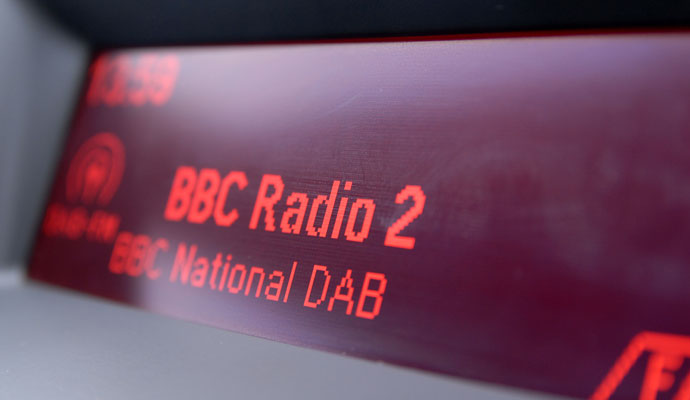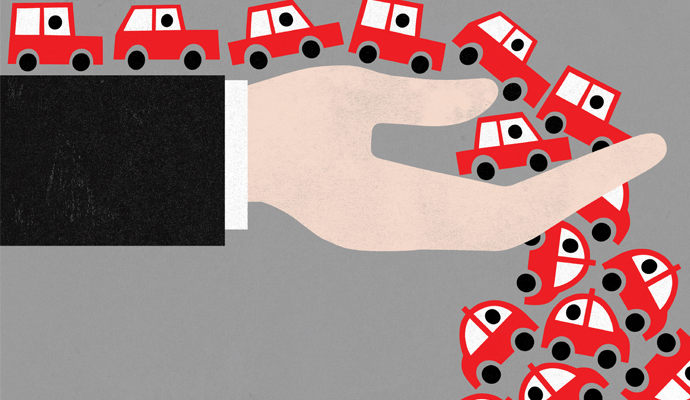Can Radio Survive in the Era of Self-Driving Cars?
Radio companies may be better positioned than they realize to provide entertainment to commuters, but they’ll need to rethink their business models.
Although it will be several years before our highways and roads are filled with autonomous vehicles, their potential has already prompted consternation in a range of industries: auto insurance, car manufacturing, trucking, and radio.
Think about it. With autonomous vehicle technology, the front seat effectively becomes the same as the back seat. And in the back seat, passengers don’t need to keep their eyes on the road, their hands on the wheel, or their minds alert. Anyone sitting in any seat in an autonomous vehicle will have a wide range of entertainment and attention-consuming options to choose from.
At the moment, streaming appears to pose a more serious threat to car-based radio listening than autonomous vehicle technology. (As we noted in the 2016–20 PwC Global Entertainment & Media Outlook, music streaming is taking a rapidly rising share of global recorded music revenue.) We are already seeing a large exodus of radio playlisting talent from prime radio to join music streamers like Spotify, Apple Music, and Deezer. Having cut their teeth curating airtime playlists, these specialists are leaving to build powerful playlist genres for moods and events that can air on global platforms that are much bigger than regional or national radio.
Streaming would seem to pose a more serious threat to car-based radio listening than autonomous vehicle technology.
At the same time, the ability to use mobile devices to access, stream, and consume audio is leading to a boom in spoken audio content — especially podcasts and audiobooks. These, too, function, as an alternative to or replacement for traditional radio.
Given that streaming’s incursion is already well under way, radio companies may not consider the future risks of autonomous cars urgent. But failing to plan for them now would be a mistake. With their newfound freedom from driving, most passengers will pick an experience that’s more immersive than drive-time radio or streaming. They might turn to video or virtual reality content, or work on their laptops, or play games on their phones. This prospect has made some commentators suggest that driverless cars will mark radio’s death-knell. But the reality is more complex. Although self-driving cars might look like a serious threat to radio companies, they’re a catalyst for making the pivot that’s needed anyway: to entertainment businesses operating across a wide array of delivery channels — both legacy and new.
It’s important to understand that autonomous cars are a long way off. In the U.S., for example, the typical car on the road today is 11.5 years old. Whenever autonomous cars start to enter the market in large numbers, it will take at least another decade for the installed base of conventional vehicles to roll over. Self-driving models will likely take off faster in urban areas, while most consumers living outside major cities — the ones who travel long distances in their cars — will probably continue to drive and listen to their car radios for much longer.
The global picture will be even more fragmented. Listening to the car radio during a commute is mostly a U.S. phenomenon. It is much less prevalent in European cities, especially those with effective train, tram, bicycle, and subway transport networks. Meanwhile, in much of Africa, due to the lack of broadband wireless infrastructure for streaming, mobile handsets are generally sold with FM radio receivers built in. Similar infrastructure constraints in many emerging markets will help to sustain traditional radio listening, including in cars.
As they anticipate the impact of autonomous driving on their business models, radio companies would be well-advised to start shifting their business models to take advantage of the growth we’re already seeing in audio on mobile platforms. At the same time, they have to continue to support and generate revenues from the legacy base of traditional radio listenership, which — while gradually dwindling — will still be with us for many more years.
The expanding array of audio formats offers radio companies opportunities to keep capitalizing on their core strengths, even if autonomous vehicles gain critical mass and the streamers keep growing.
In response, radio companies could:
• Target emerging markets, leveraging expertise from developed markets to offer compelling, high-quality radio experiences and formats to local consumers.
• Fight back against the streamers on their own turf by taking advantage of their own ability to curate playlists.
• Double down on a unique differentiator: their ability to deliver local advertising with local content.
• Attract bigger drive-time audiences by expanding relationships with key presenters, acting like music producers and promoters to monetize these personalities’ audiences across a wider array of media, with a strong focus on mobile. (Witness how gamers can now generate revenues on their YouTube and Twitch channels by giving a running commentary on their own skills.)
As they confront the challenges posed by autonomous vehicles and other disruptive technologies, radio companies should realize that they are starting from a position of strength. Every day, we see commuters fixated on their mobile phones during their 20-minute train rides into work. Sure, a person on a long journey in a self-driving car might choose to view a movie or other long-form content rather than listen to a playlist. But short commutes — or commutes that involve walking, biking, or switching from trains to buses — don’t lend themselves to sustained immersion. In the world’s large cities, where such commuting patterns are common, people may find that shorter-form audio accessible through their mobile device — a podcast, a short story, a chapter from the latest audiobook, a summary of sports highlights — is the most compelling option. Radio companies have the capabilities to create, produce, and distribute this content.
Video may have killed the radio star. But there’s no reason to expect that self-driving cars will kill the radio business.
Author profiles:
- Daniel Eckert is a leading practitioner in the emerging technologies practice for PwC’s advisory services in the U.S., Mexico, and Asia. He is managing director with PwC US, based in Hartford, Conn.
- Gregory Boyer plays a key role in PwC’s U.S. entertainment and media sector advisory practice. Based in New York, he is a principal with PwC US.
- Huw Thomas advises global companies in the entertainment and media industries on digital transformation for PwC’s advisory services. He is a principal with PwC UK, based in London.




